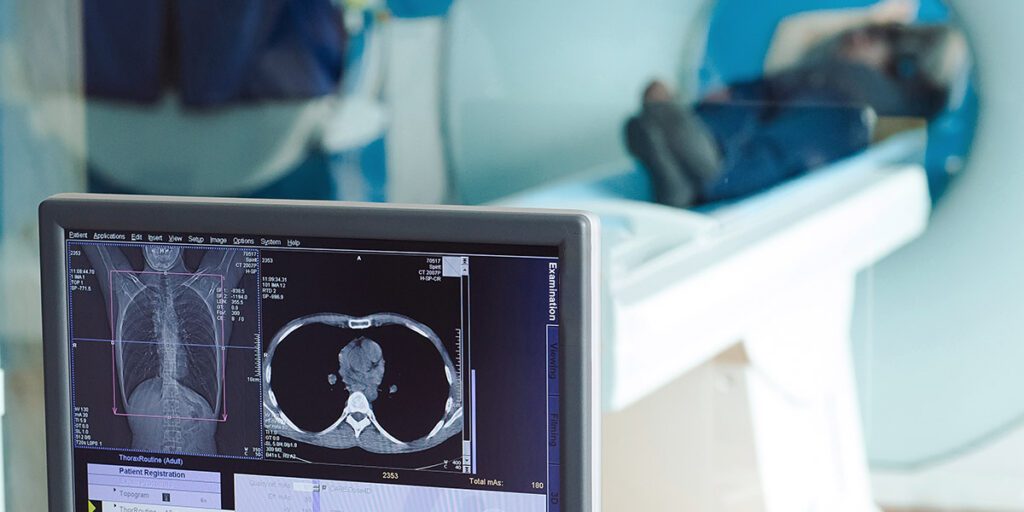MRI Technology Advancements: What Do They Mean for You?
Your first cellphone probably looked a lot different than your current one. Maybe you had to flip it open and close it, use buttons to scroll instead of a touch screen, and text on a full, built-in keyboard or using the number keys. Technology in general continues to advance, which means—similar to cellphones—an MRI scan performed several years ago wouldn’t be quite the same as one performed today. MRI technology has improved with time, making your appointment easier, faster and more comfortable, all while still helping your physician reach an accurate diagnosis.
What’s New?
Here are a few examples of recent advances in MRI technology:
Updated software for shorter exams
The U.S. Food and Drug Administration cleared several types of software in recent years that have reduced long MRI scan times. Software companies have developed new technology to speed up MRI exams of the heart, prostate, brain, MR-conditional implants (knee and hip replacements, spine implants, pacemakers), and other areas of the body. Gone are the days of hour-long appointments, especially for exams that don’t require contrast.
Weight-bearing MRI scans
Conventional MRI scanners evaluate the body lying down. New advanced MRI scanners allow people to be positioned at up to a 90-degree tilt and capture images while the body is in a weight-bearing state. This is useful to help pinpoint areas of the most pain for those who were injured in an automobile or sports accident, or for those who have a musculoskeletal disorder that worsens with movement.
Open MRI
Traditional MRI machines include narrow tunnels that can make those who have claustrophobia feel uncomfortable and possibly unable to complete important diagnostic tests. The development of open MRI solved an ongoing problem for people with a fear of tight places. An open MRI uses the same technology as traditional MRI machines, but includes wide-open space in the front and back that eliminates claustrophobia.
Silent MRI scanning
Traditional MRI scanners are loud, making several clicking, knocking or tapping noises. While the exam itself is painless, these noises can be unnerving to some people. As a result, most technologists will require or recommend patients wear ear protection during a scan. Now, many MRI scanners feature noise-reduction technology to help people feel more at ease.
MRI use during surgery
Intraoperative magnetic resonance imaging (iMRI) allows a surgeon to operate with precision and accuracy. This MRI-guided navigation system produces high-resolution images during a procedure to help target a specific area while keeping the healthy surrounding tissue intact.
Is Getting an MRI Safer Now?
Having an MRI has always been one of the safest ways to diagnose illness or a soft tissue injury. An MRI generates detailed images of the inside the body without using harmful ionizing radiation. Currently, there are no known health hazards of temporarily being exposed to a magnetic field. However, it’s crucial that you follow your provider’s instructions before your appointment. Your provider will ask if you have any metal objects on or inside your body, any allergies to contrast dye, and if you are pregnant or breastfeeding as this information will impact if and when a scan is deemed necessary.
What’s to Come: The Future of MRI Technology
Technology continues to advance and evolve, so you may expect some of these exciting developments within the next decade:
- Coil technology that conforms to the human body
- Improved patient comfort
- New magnetic designs that allow stress loading on joints
- Optimized imaging quality
- Whole-body imaging
American Health Imaging (AHI) offers advanced imaging exams that won’t cost you an arm and a leg. Find out more about our MRI services or try our cost calculator to see how much you can save.
